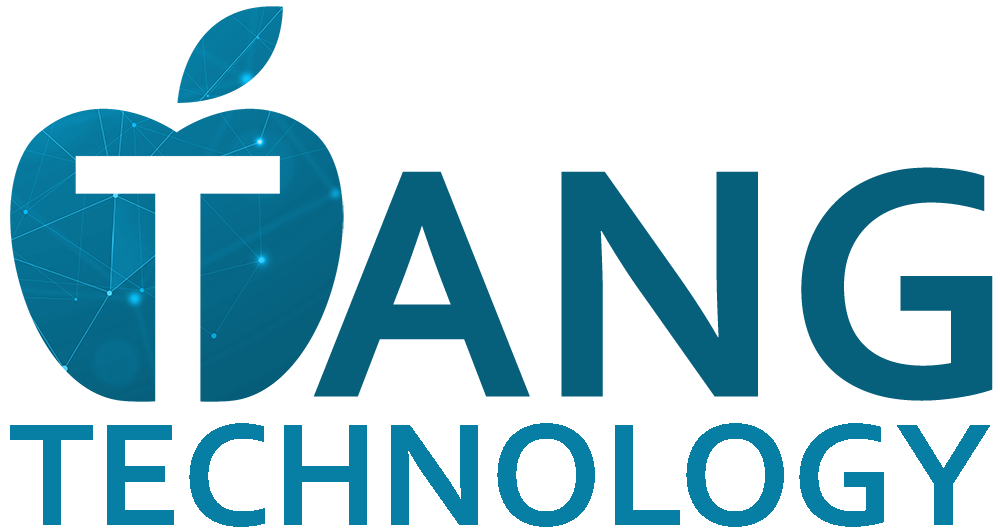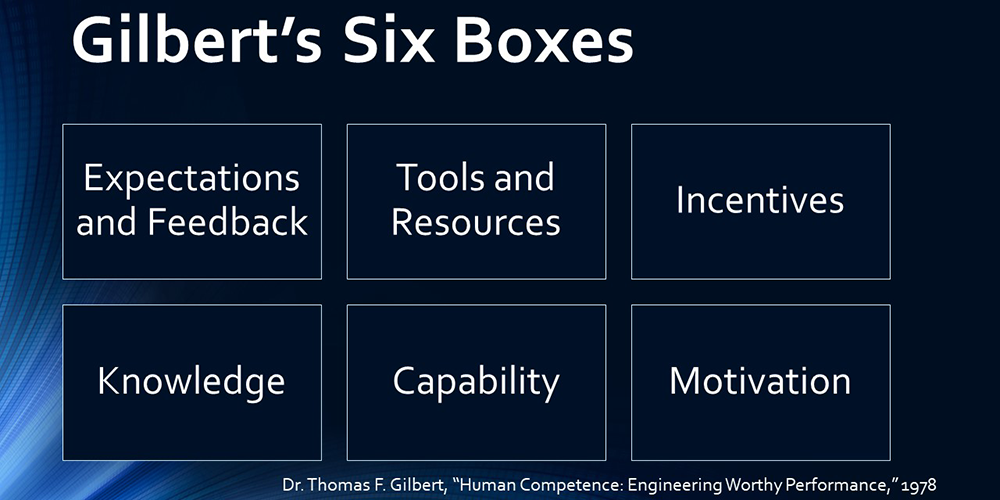Ensuring optimal workforce performance is crucial for any organization. One effective framework that aids in analyzing and enhancing performance is Dr. Thomas F. Gilbert’s “Six Boxes” model. Originating from his work “Human Competence: Engineering Worthy Performance” (1978), this model provides a comprehensive approach to identify factors affecting employee performance and devising strategies for improvement. Let’s take a look at Gilbert’s Six Boxes model and explore how it can be effectively integrated with learning strategies to enhance workforce performance.
Understanding Gilbert’s Six Boxes Model
Gilbert’s model is grounded in the belief that employee performance is influenced by a range of factors, which he categorizes into six key areas:
- Expectations and Feedback: This box examines whether employees clearly understand what is expected of them and if they receive regular feedback on their performance. Clear expectations and constructive feedback are vital for guiding employees towards desired performance outcomes.
- Tools and Resources: This focuses on the availability of necessary tools and resources required for employees to perform their tasks effectively. It questions if employees have access to the right instruments and support to do their job.
- Incentives: This box deals with how employee performance is rewarded and motivated. It scrutinizes the effectiveness of the existing reward systems and their alignment with desired performance outcomes.
- Knowledge and Skills: Central to Gilbert’s model, this area assesses the skills and knowledge employees possess and identifies gaps that need to be addressed.
- Capacity: This box considers the physical and mental capability of employees to perform the tasks required of them. It involves assessing whether employees are physically and mentally equipped to handle their job responsibilities.
- Motivation: This final box looks at the internal motivation of employees to complete their tasks. It explores the intrinsic factors that drive employee engagement and performance.
Integrating Learning with Gilbert’s Six Boxes
Learning functions typically exist in the Knowledge box and some of the tool and resources. Understanding the role training plays helps create realistic expectations for improving performance and delivering on business goals. If meeting a business goal only requires additional employee knowledge, the solution generally very simple, but most often, this is not the case. Working though Gilbert’s six boxes will help you communicate with stakeholders and executives what a complete solution for performance improvement looks like.
If you are not seeing expected ROI on training initiatives, there’s a good chance you aren’t addressing all the boxes.
The integration of Gilbert’s Six Boxes model with learning strategies offers a framework for enhancing workforce performance. By addressing each of these key areas through tailored learning solutions, organizations can significantly improve their employees’ performance and, consequently, their overall business outcomes.
If you’d like to explore how your current or new learning strategies can be aligned with your performance goals, contact Tang Technology for a free consultation. Our team of experts can help you design and deploy effective learning strategies that align with your business objectives and enhance workforce performance.

